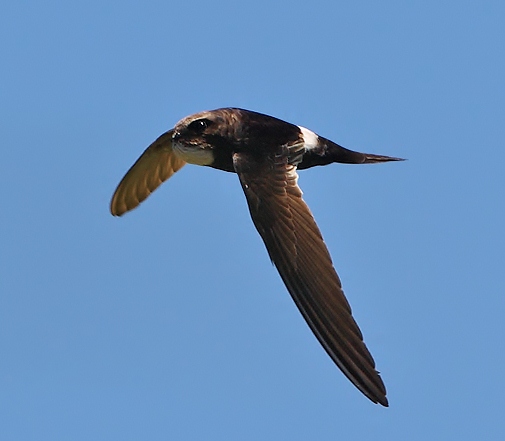 |
| Photo by Mikael Nord (Praktejder) |
Common name:
horus swift (en); andorinhão-horus (pt); martinet horus (fr); vencejo horus (es); horussegler (de)
Taxonomy:
Order Apodiformes
Family Apodidae
Range:
This species is patchily distributed in sub-Saharan Africa, with population in Nigeria, Chad, Sudan and Ethiopia, and through East Africa into their main stronghold in Zimbabwe, Botswana and South Africa. There are also some scattered population in Angola and Namibia.
Size:
These birds are 15 cm long and have a wingspan of 33-35 cm. They weigh around 26 g.
Habitat:
The horus swift is mostly found over open areas, such as grassland, fynbos, desert, lakes, semi-desert, savanna and coastal dunes, generally avoiding mountainous areas.They occur from sea level up to an altitude of 2.000 m.
Diet:
They mainly catch insects on the wing, but can also descend to the ground, gleaning insects and other arthropods from the foliage of trees or bushes. They are known too take bugs, beetles, flies, termite alates weevils, ants, wasps and also spiders.
Breeding:
Horus swifts are monogamous, colonial nesters, forming colonies of up to 12 breeding pairs, sometimes together with other species such as plain martins Riparia paludicola and common starlings Sturnus vulgaris. They nest on old tunnels excavated by other birds in sand or clay riverbanks, road cuttings, quarries or mine dumps, building a small pad at the end of the tunnel using grass, leaves, plastic and feathers all glued together with their saliva. There the female lays 1-4 eggs which are incubated for about 28 days. The chicks are cared for by both parents and fledge 6 weeks after hatching.
Conservation:
IUCN status – LC (Least Concern)
This species has a very large breeding range and is reported to be extremely common and widespread in areas of suitable habitat. The population is suspected to be increasing owing to a range expansion following a similar expansion by the swallows and martins on whose nests they often breed.







